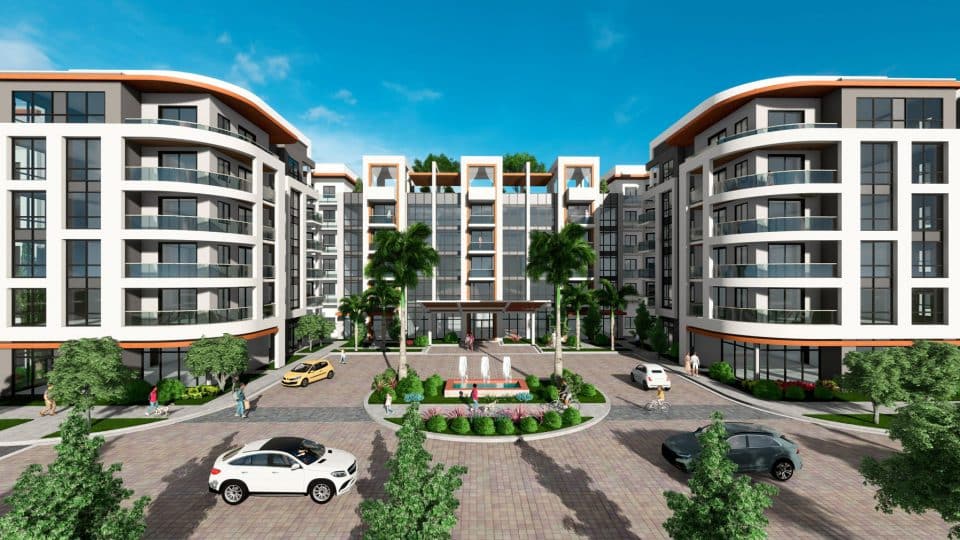Live Local Act
Some Florida real estate experts have called it the most significant state legislation to generate affordable housing in a generation and the first aimed specifically to address the critical need for “workforce” housing. The Live Local Act passed last year to encourage developers to build housing that more people can afford in a state where tenants have faced some of the nation’s steepest rent increases the past three years.
The act may pave the way for high-rise apartments in areas local governments have restricted property use, building heights and density. This has led to fierce skirmishes statewide pitting developers and housing advocates against existing residents and city officials who criticize the law for usurping careful community planning efforts that historically guide local development. Examples include Pasco County threatening to sue a developer who seeks to build apartments on commercially zoned land, Doral placing a moratorium on new development and Miami Beach officials vowing to block a proposal to turn the iconic Clevelander hotel into an 18-story development much taller than other buildings on historic Ocean Drive. Most notably, in January the owners of Bal Harbour Shops filed the first suit over the law accusing the city of impeding its plan to build a 20-story hotel, retail shops and three residential towers with 528 units. At least 40% of the units would be priced low enough to qualify as workforce housing in a community with 3,000 residents and an average home value of $1.8 million, according to Zillow.

Since the law went into effect July 1, attorneys, developers, city and state officials have been swamped with questions, proposals and criticisms. “I’ve spent more time on the phone discussing the Live Local Act with existing, new and prospective clients than on any other topic across the board,” said Orlando attorney David Leon, who has 28 years’ experience as a counsel to developers. “The amount of interest generated by the statute was, and continues to be, immense.”
Lost in all the controversy are other key aspects of the wide-ranging law, including providing apartment developers substantial new property tax breaks for building affordable and workforce housing. As of February, the Florida Housing Finance Corp. (FHFC) received 120 applications from developers to build or substantially renovate 9,681 units of workforce housing for families with incomes up to 120% of an area’s median income (AMI). The state’s goal is for these “missing middle” units to provide housing to everyday workers such as teachers, police officers and retail clerks who can’t afford to live near their jobs.
Sydne Garchik, founder of MRK Partners, an affordable housing development company operating out of Boca Raton and Los Angeles, said her firm plans to take advantage of the Live Local Act to renovate a 236-unit apartment complex in Homestead. MRK is spending about $80,000 to upgrade each unit, and will charge workforce rents for apartments that previously leased at market rates. “The property tax exemption is something that is necessary to make workforce deals pencil,” she said. “The density bonuses and other zoning benefits will help get economies of scale to make deals more feasible. This is groundbreaking legislation all around.”
David Deutch, founder of Pinnacle, a Miami-based multifamily housing developer, said he plans to take advantage of the property tax relief, but has no plans to preempt any local zoning or land development codes. “The ad valorem tax relief for workforce units is going to generate a lot of interest and activity in this space. Those are areas I’m focusing on,” he said. “I’m looking at several deals right now to take advantage of this bill. Miami-Dade, Broward, Palm Beach. A broad range of locales. I’m excited.”
Boca Raton’s proposal
Most developers, elected officials and city planning staff don’t want to do battle over the Live Local Act, said attorney Mike Marshall, who is a colleague of Leon’s at Nelson Mullins. Some municipalities are crafting plans to take advantage of a provision in the law that provides cities more flexibility. One example is Boca Raton, where officials recently drafted an ordinance tailored to meet an alternative provision in the law that allows cities discretion on projects that reserve at least 10% of units as affordable, said Ele Zachariades, a Boca Raton attorney. Zachariades and Marshall served on a community team with city staff to draft the new framework, which would allow developers to build apartments on some land zoned for commercial, industrial and mixed uses if 10% to 15% of the units are affordable and workforce apartments.
These projects also would need to be in areas designated as planned mobility and within one-quarter mile of a retail center or provide retail, restaurants or offices on site. The ordinance would provide a cap of 2,500 units. “This will be a starting point,” she said. “If and when these units are exhausted, the council may decide to extend the cap.” This proposed ordinance comes as West Palm Beach-based North American Development Group is asking for city approval to build apartments on property that has an office building and a parking garage. Of the 295 units planned, 52 are deemed as affordable and workforce housing.
Boca Raton Council Member Fran Nachlas said Boca Raton’s ordinance is a proactive effort to attract and retain workers such as the nurses and firefighters she knows who commute long distances to jobs in the city. “We need to be able to provide a range of housing options to support their needs,” she said. As of our deadline, council members indicated they expect to adopt the ordinance at its next meeting after making minor revisions.
Live Local Act
A state Senate analysis of the law states, “One major goal at all levels of government is to ensure that citizens have access to affordable housing.”
- Florida considers housing affordable when it costs less than 30 percent of a family’s gross income. Most affordable housing programs are for families with incomes of no more than 80% of an area’s median income (AMI). The “workforce” category is for families with incomes of 120% AMI.
- Provides more than $711 million in additional funding for affordable housing initiatives, mostly through the state’s two largest affordable housing programs, which are administered by the Florida Housing Finance Corp.
- Generally, preempts local governments’ requirements regarding zoning, density, and height to streamline multifamily development in commercial, industrial and mixed-use zoned areas if at least 40% of the housing units are classified as affordable or workforce. An amended bill also addresses local floor-to-area ratios.
- Developers can use the highest density in the city and the highest height within one mile of the project; the amended bill would set the height limit to one-quarter mile in some cases.
- A project must be administratively approved by the local government provided it meets other regulations such as building codes.
- Requires local governments to reduce parking minimums if a project is near a transportation hub and other factors.
- Provides a 75% tax exemption for workforce or “missing middle” housing in properties with more than 70 units or more than 10 units in the Florida Keys. Developers get a 100% tax break for units set aside for tenants under 80% of AMI.
